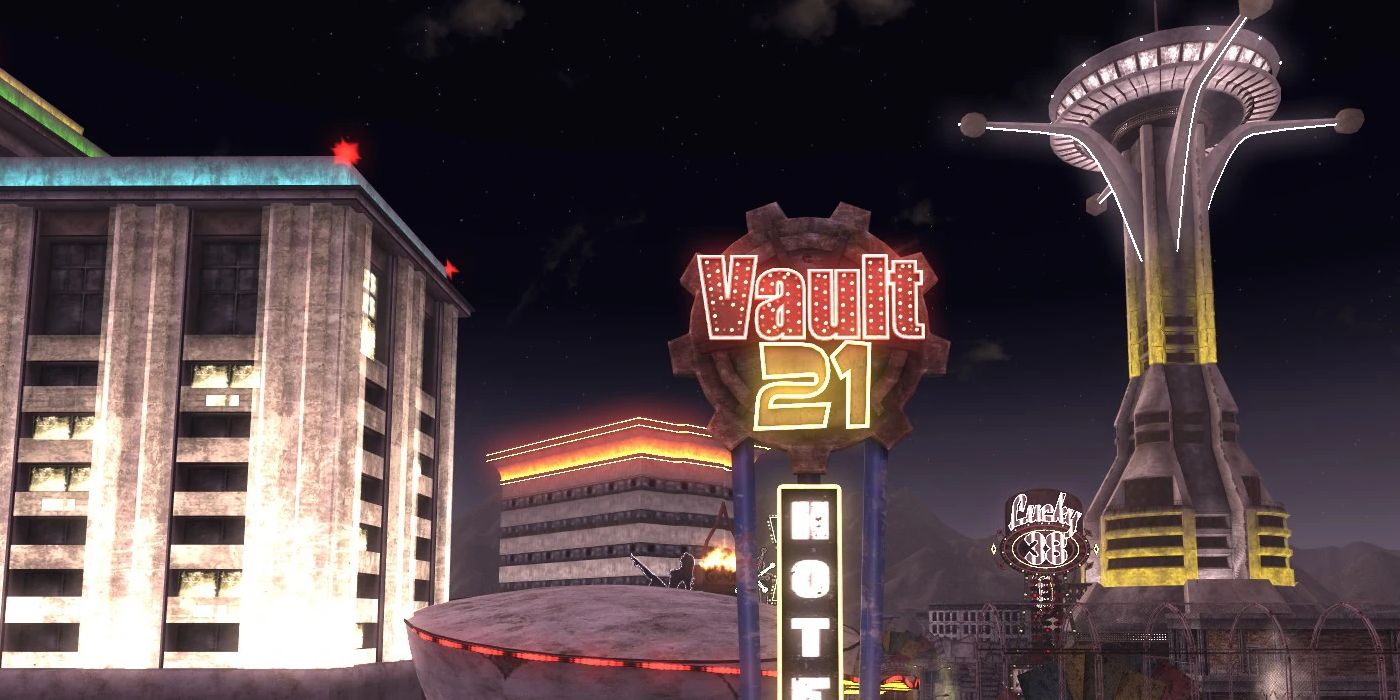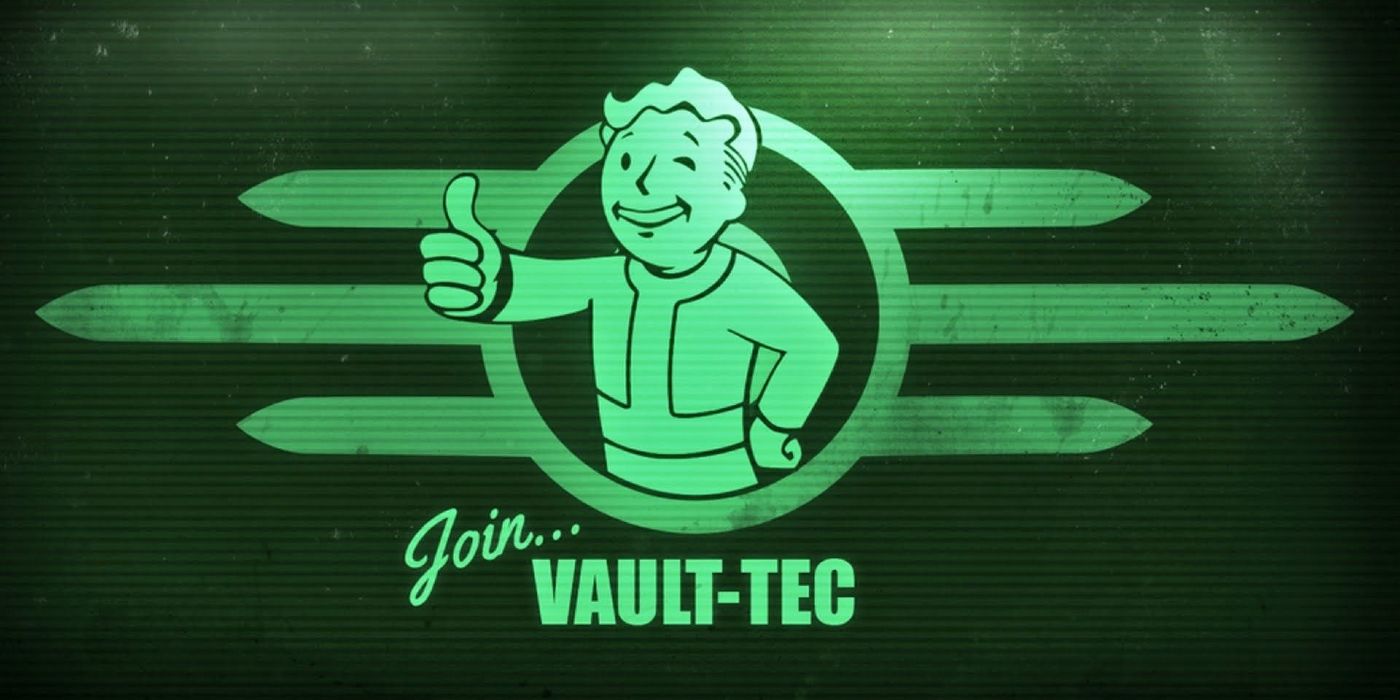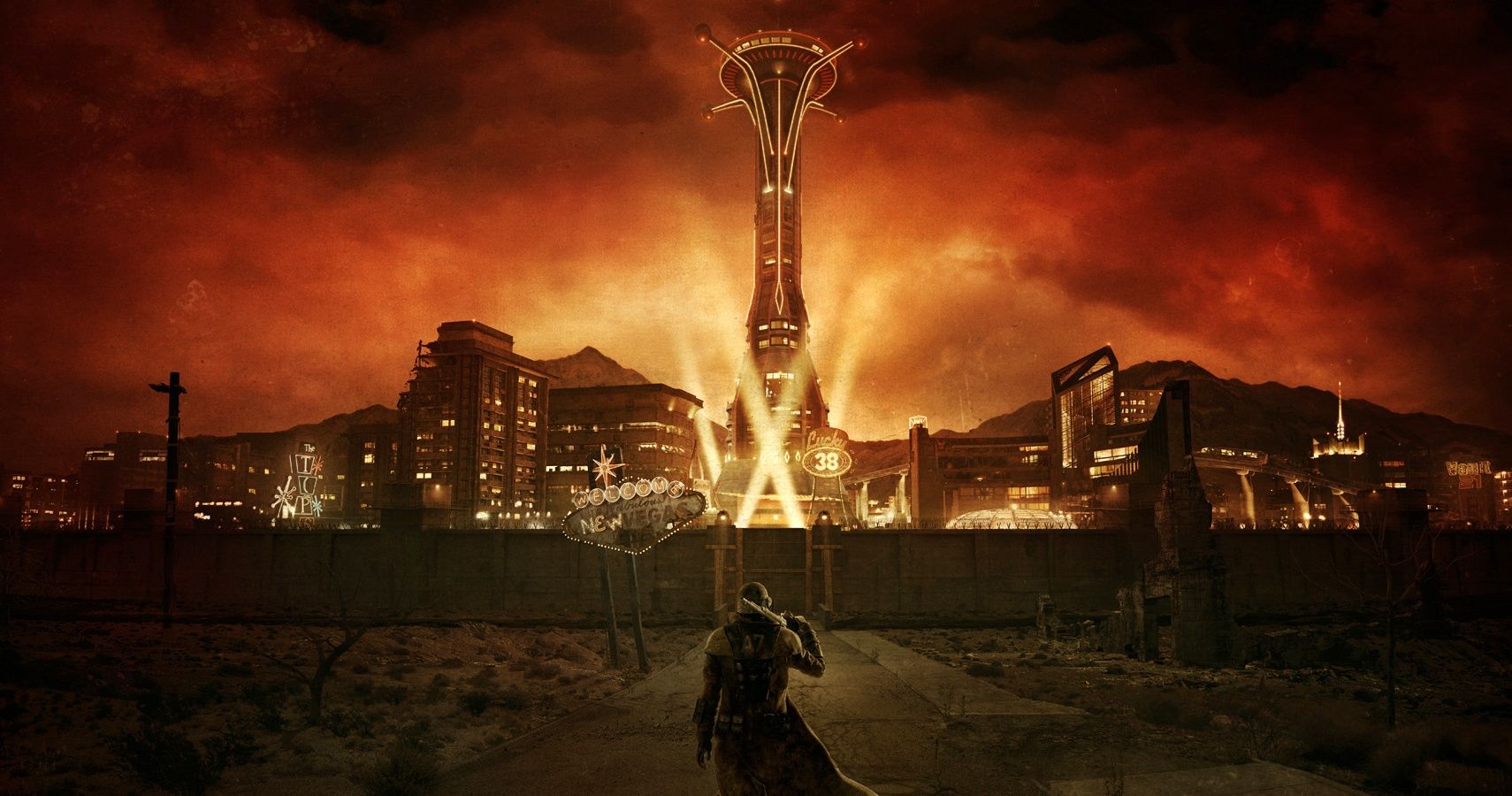
Fallout: New Vegas remains one of the series' most beloved entries over a decade since its release, considered by many fans a great synthesis of Bethesda's first-person Fallout format and the themes and complexity of the first two CRPG Fallout games. Fans have been mining the game since its release for every detail from secret dialogue options to nuggets of lore hidden in the Mojave, but there are still interesting parts of the game's worldbuilding that have gone largely unnoticed.
There's a small detail in Fallout: New Vegas' namesake city which highlights just how important cities can be, and points to an interesting choice in Obsidian's world design. Here's a breakdown of the detail, what it means, and what it could teach future first-person RPGs as the genre finds it footing in a new generation of hardware.
RELATED: The Outer Worlds 2 Won't Fill the Void Left By Fallout: New Vegas

Cities in Obsidian and Bethesda first-person RPGs aren't known for their size. Although some Fallout games like Fallout 3 and 4 take place entirely within the ruins of cities, the town-like settlements within them like Diamond City or Rivet City are often immersion-breakingly underpopulated. New Vegas may have originally been conceived by Obsidian as a far larger city, but the still impressive version fans ended up getting in the game's retail release took advantage of cities as a storytelling device in a way that one small detail puts the spotlight on.
Fallout: New Vegas' eponymous city has two vaults within its city limits, Vault 3 and Vault 21. Both stand out in the Fallout world. While most other Vaults are revealed to be cruel experiments by Vault-Tec ranging from cloning to cryogenics and autocracy, the history of Vaults 3 and 21 are unique.
Vault 21 is one of the only Vault-Tec vaults that essentially delivered on the company's promise to its inhabitants. Vault 21 inhabitants were subject to an experiment, but by chance the outcome of the experiment ended up being in their favor in a twist befitting the vault sprawling under America's most famous pre-War casinos. Everyone in Vault 21 was allocated equal space and equal resources to start off with. Every single problem that arose within the vault had to be resolved using gambling. This included major political disputes, with each faction sending its representative to gamble on its behalf and hoping lady luck smiled at them.
In 2274 Mr House offered the residents of Vault 21 the opportunity to participate in rebuilding New Vegas, which after a high-stakes game of Blackjack the Vault-dwellers agreed to. Inhabitants like Doc Mitchell left for the outside world, and the vault was largely filled in with concrete aside from the upper levels, kept in use as a hotel. Compared to the other vaults of the Fallout universe the residents of Vault 21 got off extremely lucky.
The residents of Vault 3, built in southwestern Las Vegas, were faced with a similar gamble when they made contact with the outside world. As one of the original control vaults, there was no experiment set up for Vault 3 when the bombs dropped in the Great War of 2077, and like the Vault 21 population the inhabitants were spared the fates of many of the Fallout universe's Vault-dwellers.
Vault 3 ended up representing among the best hopes of the Vault-dwellers when they first fled underground. The society within the vault stayed democratic and the maintenance and food systems worked like a charm for years. When a water processing malfunction forced Vault 3 to open its doors, however, their gamble did not pay off. The naivete of the Vault-dwellers was quickly taken advantage of by the Fiends, who swarmed in, killed the residents, and established it as their own base of operations.
New Vegas is a city with two vaults, one where a high-stakes gamble paid off, and one where it did not. The in-game version of New Vegas is large enough that it can be its own diverse ecosystem reflecting one of the major themes of the game, showing two different ways the decisions made by the Courier about New Vegas' future may play out depending on where the chips fall.
RELATED: Fallout: New Vegas Mod Makes Canceled Van Buren Game Accessible to Play

This function of New Vegas stands in contrast to some of the smaller cities found in other Bethesda RPGs like Skyrim and the other first-person Fallout games. While a city like New Vegas is large and developed enough that a small part of it can be used to reflect some major themes in the game, Skyrim's far smaller and numerous cities don't allow the game's hold capitals to reach their full storytelling potential. Cities like Riften have a theme - in this example's case, it's the home of the Thieves' Guild.
However, Skyrim's cities simply aren't large or diverse enough to begin to develop overarching themes in the game. The game's nine cities may outnumber the Mojave Wasteland's large towns, but by focusing on the area surrounding a single, central city, New Vegas is able to do something Skyrim can't. By creating a city large enough to house multiple vaults, several large casinos with their own cultures, hotels, and a clear division between the poverty of Freeside and the luxury of the Strip, New Vegas is able to create a city which has something to say as much as it has something to show.
New Vegas' two Vaults are just one example of the way a larger city created with thematic intent can play into a game's overall narrative. Even in Fallout 4, which centers on the city of Boston, the opportunity to create a city with architecture and contrasts that play into the game's main themes is not taken advantage of in the same was as New Vegas. Towns like Goodneighbor may play into local history and aesthetics, but they don't play with the game's main themes in the same way that even a simple setup like New Vegas' contrasting vaults do.
Major settlements have huge potential to inform how the player views a game's world and story at large. A large city doesn't ensure thematic depth, but New Vegas shows that a diverse city with distinct districts and contrasting communities can add far more to a game than a range of smaller settlements with stories that don't play into the themes of the main story.
Fallout: New Vegas is available now on PC, PS3, and Xbox 360.
MORE: Fallout: New Vegas - The Most Memorable Companions in the Game

